PMEL Aerosol Group
Aerosols are another name for particulate matter in the atmosphere. Aerosols are important because in clear skies they can scatter sunlight back to space can act to help cool the planet. Aerosols are also important because they can act as a site for water to condense on and form cloud particles. Particles that water can condense on are called Cloud Condensation Nuclei, CCN. In fact the concentration of CCN can greatly affect the optical properties of the cloud that is formed when air is lifted and cooled. If there are a small number of CCN the resulting cloud will have a small number of large droplets. If there are a much larger number of CCN the resulting cloud will have a large number of small droplets. Even though the liquid water concentration in both clouds is the same, the cloud with the large number of small droplets will be much whiter, and reflect more sunlight then the cloud with the small number of large droplets.
It is believed that Aerosols can thus counteract some of the present and future greenhouse warming, and it is vital to understand the processes that create and modify aerosols in the marine atmosphere.
Our group from NOAA-PMEL and the University of Washington JISAO is making measurements of the physical, chemical and optical properties of the aerosols in the marine atmosphere.
The following is a photo tour of some of our instrumentation
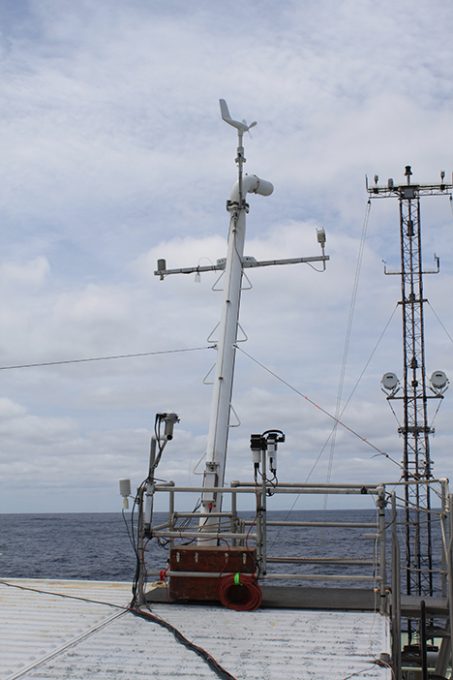
Our aerosol inlet at the top of one of our lab-vans. Our inlet is aerodynamically designed and has a computer controlled motor to keep the inlet pointed into the wind so the large particles do not impact on the side of the inlet. Photo: Jim Johnson
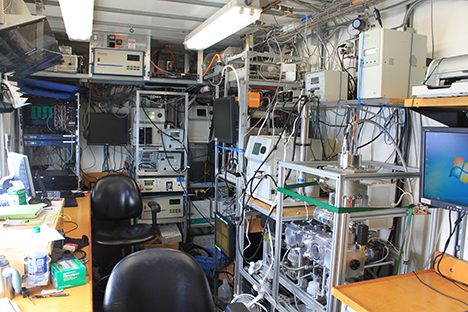
This is the inside of one of our aerosol vans with assorted particle counters, and several devices to measure the particle size spectrum. Photo: Jim Johnson
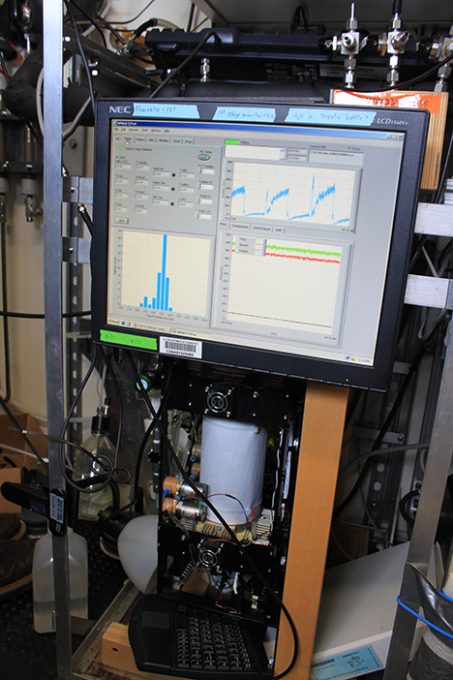
Our Cloud Condensation Nuclei Counter, CCNC, an instrument that takes sample air and raises the humidity to various levels that are just above the condensation point, then it measures concentration of water drops that are formed. Photo: Jim Johnson
Another activity is to help with the launch of the weather balloons. The radiosonde attached to the balloon measures temperature, relative humidity and pressure. The radiosonde also receives GPS to track its motion as it ascends, so that a vertical profile of the horizontal winds can also be derived.
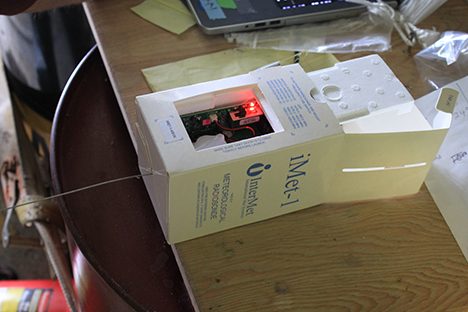
Preparing the radiosonde for launch. Photo: Jim Johnson

A weather balloon is filled with helium and the radiosonde is attached. Photo: Jim Johnson
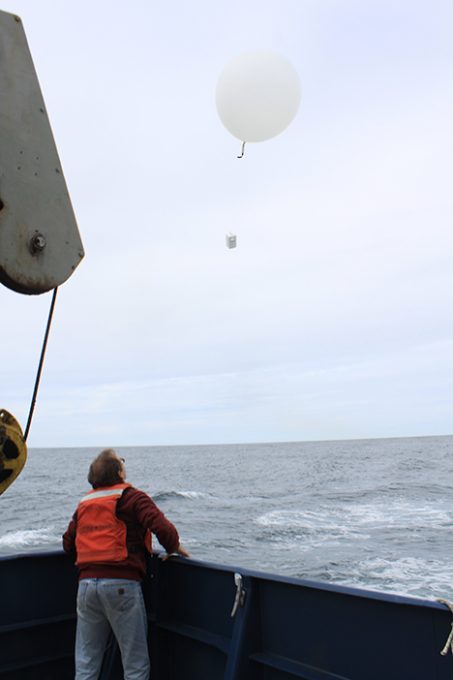
The balloon and radiosonde are walked to the back of the ship’s fantail and released. As the package rises it sends back the data by a radio link to make a vertical profile of temperature, humidity and winds. Photo: Jim Johnson
Written by Jim Johnson




Thank you so much for the explanation of aerosols. Will be looking a clouds differently from now on.